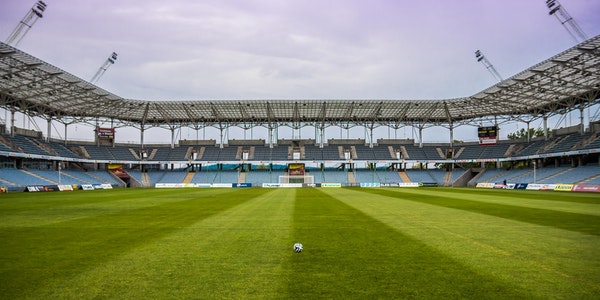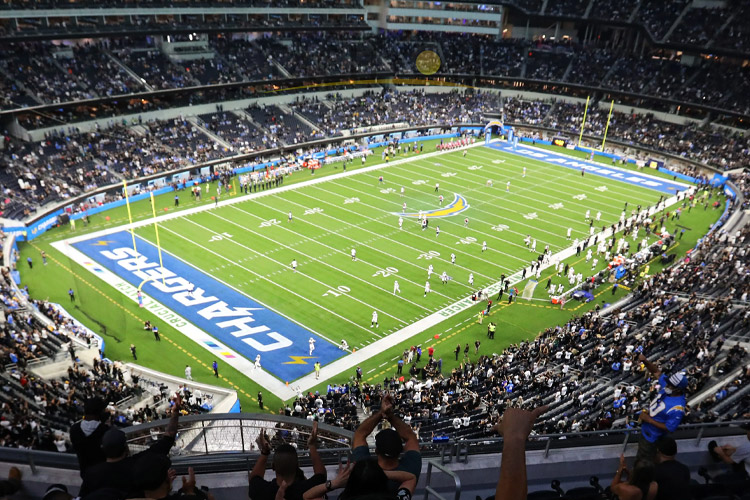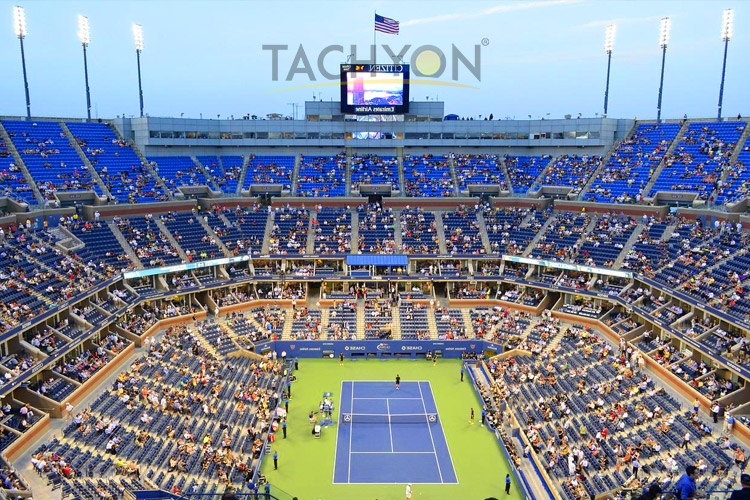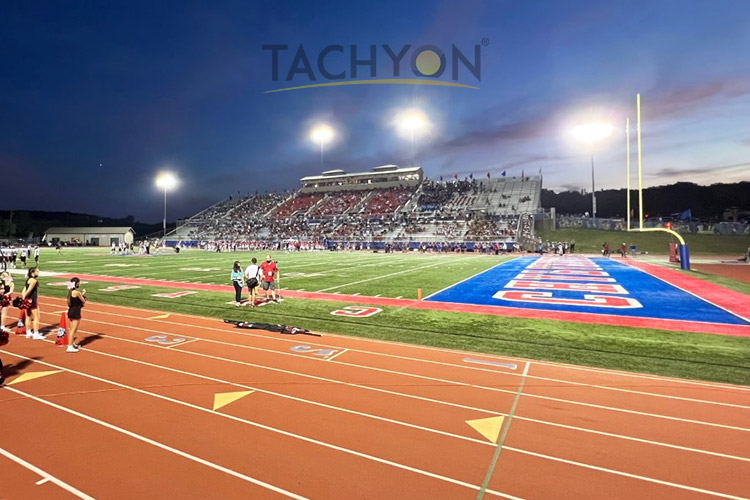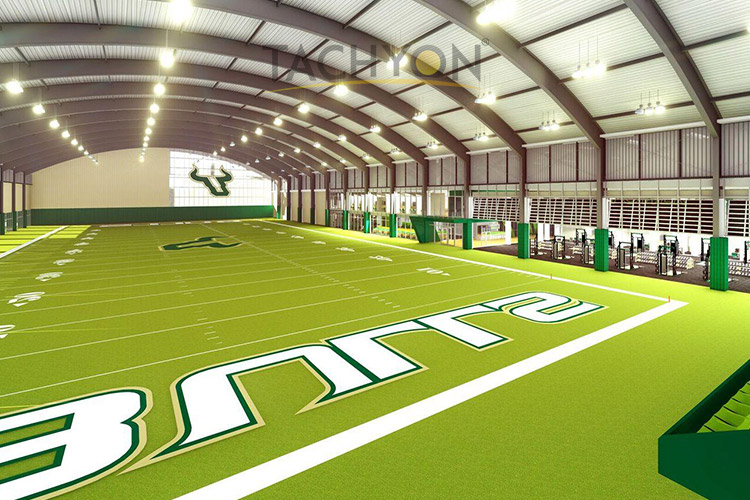I. Introduction
A. Brief overview of the importance of sustainability in sports
The importance of sustainability in sports stems from the significant environmental impact of athletic events and facilities. Sports, with their large stadiums, extensive travel requirements, and resource-intensive operations, have the potential to generate substantial carbon emissions, waste, and energy consumption. Embracing sustainability in sports not only reduces this environmental footprint but also sets a powerful example for fans, sponsors, and the broader community. Additionally, it can lead to cost savings, enhanced public image, and improved athlete performance and well-being. Overall, sustainability in sports is crucial for creating a healthier planet, inspiring positive change, and ensuring the longevity of athletic endeavors for future generations.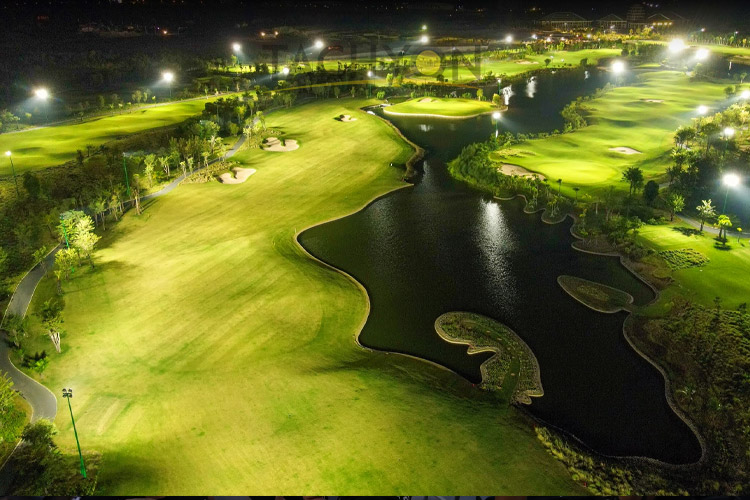
B. Introduction to LED stadium lighting as a sustainable solution
In recent years, the sports industry has increasingly embraced sustainability as a core principle in its operations. One notable area where this shift is evident is in stadium lighting, where traditional lighting systems are being replaced by LED (Light Emitting Diode) technology. LED stadium lighting represents a sustainable solution that not only addresses the environmental impact of sports facilities but also offers numerous benefits to teams, fans, and the surrounding community.
LED stadium lighting stands out as a sustainable solution due to its energy efficiency, longevity, and reduced environmental footprint compared to traditional lighting technologies such as metal halide or high-pressure sodium lamps. By transitioning to LED lighting, sports teams can significantly decrease their energy consumption, lower operating costs, and minimize light pollution, all while providing superior illumination for players and spectators alike.
This transition to LED stadium lighting aligns with broader sustainability initiatives within the sports industry, demonstrating a commitment to reducing carbon emissions, conserving resources, and promoting environmental stewardship. Moreover, it serves as a visible symbol of leadership and innovation, inspiring other organizations and industries to adopt similar sustainable practices.
In this outline, we will explore the advantages of LED stadium lighting, highlight case studies of sports teams that have made the transition, discuss challenges and considerations, and examine future trends and opportunities in sustainable sports lighting. Through this exploration, we aim to showcase LED stadium lighting as a practical and effective solution for enhancing sustainability in sports while improving the overall experience for athletes, fans, and communities.
C. Purpose of the outline
The purpose of the outline is to provide a structured framework for a comprehensive exploration of the transition to LED stadium lighting as a sustainable solution in the sports industry. By outlining key sections, including background information, advantages, case studies, challenges, future trends, and conclusions, the outline serves several purposes:
- Organization: It helps organize the content into logical sections, making it easier for readers to follow the flow of information.
- Focus: It ensures that the discussion stays focused on the main topic of LED stadium lighting and its sustainability implications, preventing tangential or irrelevant information.
- Guidance: It provides guidance for researchers, writers, or presenters who are creating content on this topic, offering a roadmap for developing detailed explanations, case studies, and analysis.
- Engagement: It helps maintain reader engagement by presenting a clear overview of what to expect in the content, encouraging continued interest and attention.
Overall, the outline serves as a valuable tool for effectively communicating the importance, benefits, challenges, and future prospects of LED stadium lighting as a sustainable solution in the sports industry.
II. Background Information
A. History of stadium lighting
- Stadium lighting has a rich history dating back to the late 19th century when electric lighting began to revolutionize sporting events. Prior to the advent of electricity, stadiums relied on rudimentary sources of illumination such as torches, oil lamps, and gas lights, limiting the scope and timing of sporting events.
- The introduction of arc lamps and incandescent bulbs in the early 20th century marked a significant milestone in stadium lighting, enabling venues to host events after sunset and enhancing visibility for players and spectators alike. These early electric lighting solutions laid the foundation for the development of more advanced technologies in the decades to come.
- Over time, the evolution of stadium lighting has been characterized by continuous innovation and improvement, with the introduction of metal halide lamps and high-pressure sodium lamps in the mid-20th century further enhancing the quality and efficiency of illumination in sports venues.
- In recent years, the transition to LED (Light Emitting Diode) lighting has emerged as a game-changer in stadium illumination, offering superior energy efficiency, durability, and flexibility compared to traditional lighting technologies. LED stadium lighting not only provides exceptional brightness and clarity but also contributes to sustainability efforts by reducing energy consumption and environmental impact.
- As stadiums continue to evolve and modernize, the history of stadium lighting serves as a testament to the importance of innovation and adaptation in enhancing the sports experience for athletes, fans, and spectators around the world.
B. Environmental impact of traditional stadium lighting
The environmental impact of traditional stadium lighting, such as metal halide or high-pressure sodium lamps, is significant and multifaceted. Here’s a brief overview:
- Energy Consumption: Traditional stadium lighting systems consume large amounts of electricity to produce sufficient illumination for sporting events. The high wattage requirements of metal halide and high-pressure sodium lamps contribute to substantial energy consumption, leading to increased carbon emissions from power generation.
- Carbon Emissions: The energy-intensive nature of traditional stadium lighting results in significant greenhouse gas emissions, primarily from fossil fuel-based electricity generation. These emissions contribute to climate change and air pollution, impacting both local and global environments.
- Light Pollution: Traditional stadium lighting often produces excessive glare and light spillage beyond the confines of the venue, contributing to light pollution. Light pollution not only disrupts natural ecosystems and wildlife behavior but also detracts from the quality of life for nearby residents and communities.
- Heat Generation: Metal halide and high-pressure sodium lamps generate significant amounts of heat during operation, contributing to urban heat island effects in densely populated areas. This excess heat can exacerbate temperature fluctuations and air quality issues, particularly in urban environments.
- Waste Generation: Traditional lighting technologies have relatively short lifespans and require frequent replacement of lamps and fixtures. This results in the generation of electronic waste (e-waste) when old lamps are discarded, posing environmental and health hazards due to the presence of hazardous materials such as mercury in some lamp types.
Overall, the environmental impact of traditional stadium lighting underscores the need for sustainable alternatives, such as LED (Light Emitting Diode) lighting, which offer greater energy efficiency, longevity, and reduced environmental footprint. Transitioning to LED stadium lighting represents a proactive step towards mitigating these environmental impacts and promoting sustainability in the sports industry.
C. Introduction to LED lighting technology
Light Emitting Diode (LED) lighting has emerged as a transformative technology in the field of illumination, offering numerous advantages over traditional lighting technologies. LEDs are semiconductor devices that emit light when an electric current passes through them, converting electrical energy into visible light with exceptional efficiency. This introduction will highlight the key features and benefits of LED lighting technology:
- Energy Efficiency: LED lighting is renowned for its high energy efficiency, consuming significantly less power than traditional incandescent, fluorescent, or halogen lamps. LEDs convert a greater percentage of input energy into visible light, resulting in reduced electricity consumption and lower operating costs over the long term.
- Longevity: LEDs have an exceptionally long lifespan compared to conventional lighting sources, lasting tens of thousands of hours under normal operating conditions. This longevity translates to reduced maintenance requirements and fewer lamp replacements, leading to additional cost savings and convenience for users.
- Durability: LED lighting fixtures are rugged and durable, capable of withstanding harsh environmental conditions, temperature fluctuations, and mechanical shocks. Unlike fragile incandescent or fluorescent bulbs, LEDs are solid-state devices that are less prone to breakage and damage, making them ideal for use in demanding applications such as outdoor lighting and sports facilities.
- Instantaneous Operation: LEDs illuminate instantly upon activation, eliminating the warm-up time required by some traditional lighting technologies. This instantaneous operation enhances convenience and safety, particularly in situations where rapid lighting response is essential, such as emergency lighting or motion-activated security lights.
- Directional Light Output: LEDs emit light in a specific direction, allowing for precise control and distribution of illumination. This directional characteristic enables efficient lighting design and minimizes light spillage, resulting in improved visibility, reduced glare, and enhanced visual comfort for users.
- Environmental Benefits: LED lighting offers several environmental advantages, including reduced carbon emissions, lower energy consumption, and decreased light pollution. By promoting sustainability and energy conservation, LEDs contribute to environmental protection efforts and support the transition to a more sustainable future.
In summary, LED lighting technology represents a revolutionary advancement in illumination, offering unparalleled energy efficiency, longevity, durability, and environmental sustainability. As the preferred choice for a wide range of applications, including residential, commercial, industrial, and outdoor lighting, LEDs continue to reshape the lighting industry and redefine the way we illuminate our surroundings.
III. Advantages of LED Stadium Lighting
A. Energy efficiency
Energy efficiency refers to the utilization of energy in a way that maximizes output while minimizing input. It involves using less energy to perform the same task or achieve the same level of service. Here’s a brief overview of energy efficiency:
- Importance: Energy efficiency is crucial for several reasons. It helps reduce energy consumption, lower energy bills, and decrease greenhouse gas emissions associated with energy production. Additionally, it conserves natural resources and enhances energy security by reducing dependence on fossil fuels.
- Benefits: Energy efficiency offers numerous benefits to individuals, businesses, and society as a whole. For individuals and households, it can result in lower utility bills, increased comfort, and improved indoor air quality. For businesses, it can lead to cost savings, increased competitiveness, and enhanced reputation. On a broader scale, energy efficiency contributes to economic growth, job creation, and environmental sustainability.
- Implementation: Energy efficiency can be achieved through various measures, including:
Adopting energy-efficient technologies and appliances, such as LED lighting, energy-efficient HVAC systems, and ENERGY STAR-rated appliances.
Improving building insulation and sealing to reduce energy losses through walls, windows, and doors.
Implementing energy management systems and controls to optimize energy usage in commercial and industrial facilities.
Promoting energy conservation behaviors and practices among individuals, employees, and communities.
Investing in renewable energy sources, such as solar panels and wind turbines, to generate clean and sustainable energy.
- Policy and Regulation: Governments and regulatory agencies play a crucial role in promoting energy efficiency through policies, standards, and incentives. These may include building codes, appliance efficiency standards, energy efficiency labeling programs, tax incentives, and grants for energy efficiency upgrades.
- Technological Advancements: Advances in technology continue to drive improvements in energy efficiency across various sectors. Innovation in areas such as lighting, heating and cooling, transportation, and industrial processes enables the development of more energy-efficient products, systems, and solutions.
Overall, energy efficiency is a cornerstone of sustainable development, offering a cost-effective and environmentally responsible approach to meeting energy needs while reducing environmental impact and enhancing quality of life.(To Be Continued)

